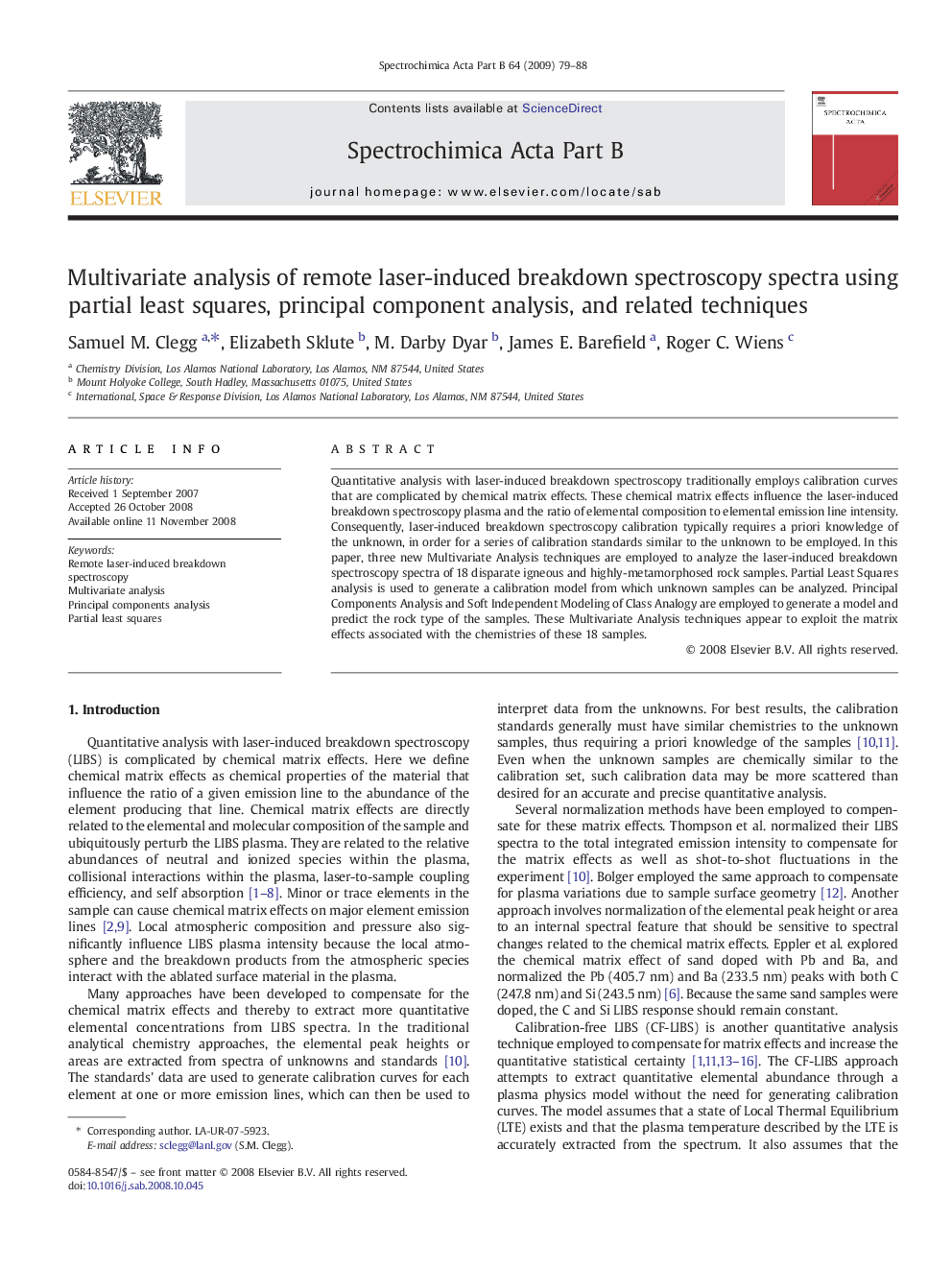| Article ID | Journal | Published Year | Pages | File Type |
|---|---|---|---|---|
| 1240416 | Spectrochimica Acta Part B: Atomic Spectroscopy | 2009 | 10 Pages |
Quantitative analysis with laser-induced breakdown spectroscopy traditionally employs calibration curves that are complicated by chemical matrix effects. These chemical matrix effects influence the laser-induced breakdown spectroscopy plasma and the ratio of elemental composition to elemental emission line intensity. Consequently, laser-induced breakdown spectroscopy calibration typically requires a priori knowledge of the unknown, in order for a series of calibration standards similar to the unknown to be employed. In this paper, three new Multivariate Analysis techniques are employed to analyze the laser-induced breakdown spectroscopy spectra of 18 disparate igneous and highly-metamorphosed rock samples. Partial Least Squares analysis is used to generate a calibration model from which unknown samples can be analyzed. Principal Components Analysis and Soft Independent Modeling of Class Analogy are employed to generate a model and predict the rock type of the samples. These Multivariate Analysis techniques appear to exploit the matrix effects associated with the chemistries of these 18 samples.
